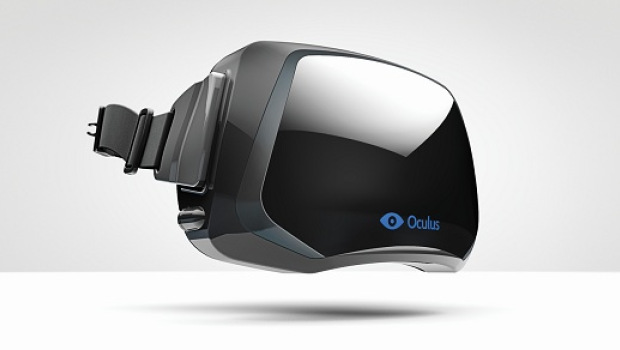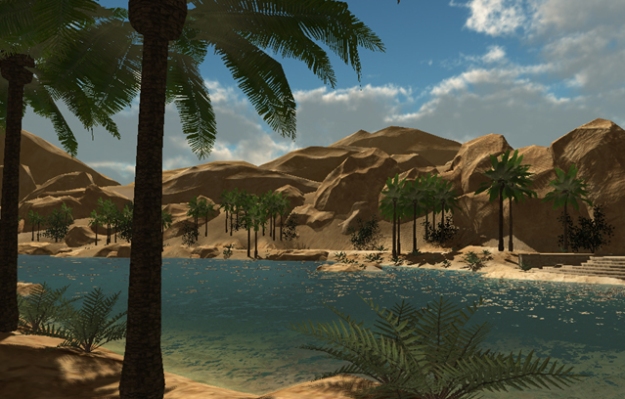Altering Reality Via Virtual Reality
by Mark Sivy, Ed.D.
The 4th Annual ICT Forum “Leadership in the Digital Age” took place on April 5th 2015 in Muscat, Oman. The forum theme was “Disruption by Design”, following the notion of Disruptive Innovation that was presented by Clayton Christensen. During the leadership event, a CEO panel provided their perspectives to a group of almost 250 business leaders. Of particular interest to this post is the concept of Virtual Reality (VR) that was presented by Fathi Al Riyami, CEO of Cosmic Surrounding Technology. In particular, the focus of the discussion was on VR created through the use of a new wearable headset technology that attaches to a personal computer.
For a virtual organization, it’s extremely important to have clients, customers, executives, employees and business partners correctly visualize and understand a concept, design, or process. This can be a challenge. Fortunately with recent innovations in technologies and creative capacities, we can now instill the desired perceptions through virtual reality. This ability presents us with a wide assortment of opportunities in areas such as training, design and product development that were previously not possible.
Virtual Reality (VR) in a general sense is a term used to describe a three-dimensional, computer-generated “environment” which can be interacted with by an individual or a group. Within these immersive environments, users can have the ability to manipulate objects, participate in simulations, gather information, or perform a series of actions.
The soon-to-be-available wearable visual device, such as the Oculus Rift (OR) or Samsung Gear VR, will enable users step inside their choice of VR environments. These devices use tracking technologies and optical screens that provide 360° head movement that allows you to seamlessly look around and feel as part of the computer generated scene. For instance, Arch Virtual is using a VR to bring on a whole new perspective for architectural design and visualization (note, the true experience is not realized without a 3D headset):
Mr. Al Riyami identified four industries that can benefit from these highly-advanced affordable technologies offer. These are:
Corporate Training
For a variety of corporate needs such as the development of human interaction skills, product knowledge, and machinery operations, the use of VR scenarios can provide an immersive experience that enhances standard training. Additionally, due to the portability of the headsets, VR simulations provide greater opportunities to learn and practice at times and places that are more conducive to learning.
Health, Safety, and Environment (HSE)
VR is able to provide HSE training experiences that are far superior to other methods. Using VR modules, trainees can be provided with the ability to experience and react to simulated scenarios that represent possible real-life events, and all without endangering humans or risking property damage. For example, learners can tour training scenarios and identify areas of risks factors such as unsafe storage of chemicals, electrical issues, potential explosive materials, and improper equipment operation.
Driving / Road Safety
With additional low cost equipment such as computer-attached driving gear and seating, VR can produce positive road safety outcomes by exposing drivers to simulated driving environments and situations. This can be used to train individuals new to driving, those seeking advanced driving certifications, or those who want to review or perfect existing driving abilities. These driving experiences can be used with school driver education programs, private driving schools, driver knowledge tests, or specialized industry transportation and heavy equipment training. Again, all of this can be done in a low cost, low risk setting.
Tourism
Tourism is a trillion dollar international industry. In many countries tourism represents a significant share of gross domestic product (GDP) and it makes up 6-8% of the world’s employment. With the global increase in the number of vacations taken, competition between regions and nations to capture a market share is on the rise. However, to be a market leader it is vital to create a destination image that has a competitive edge. Research has shown that through the utilization of technology tools and the Internet, solutions can be developed that are capable of capturing the potential visitor’s attention, feelings, motivations and impulses. Using well-planned and well-designed VR media and simulations can propel the online destination experience to being more engaging, interactive, empowering and memorable.
Final Words
Even though household and mobile use of the VR technologies described in this post are still a few years off, mindful and innovative organizations, institutions and government offices should be looking into integrating research and development costs into their fiscal budgets now. As we’ve learned in today’s fast-paced technology-oriented society, you are either an early leader or are forever trying to catch up with competition.
Reflection Point – “In business, the competition will bite you if you keep running, if you stand still, they will swallow you.” ~Victor Kiam


